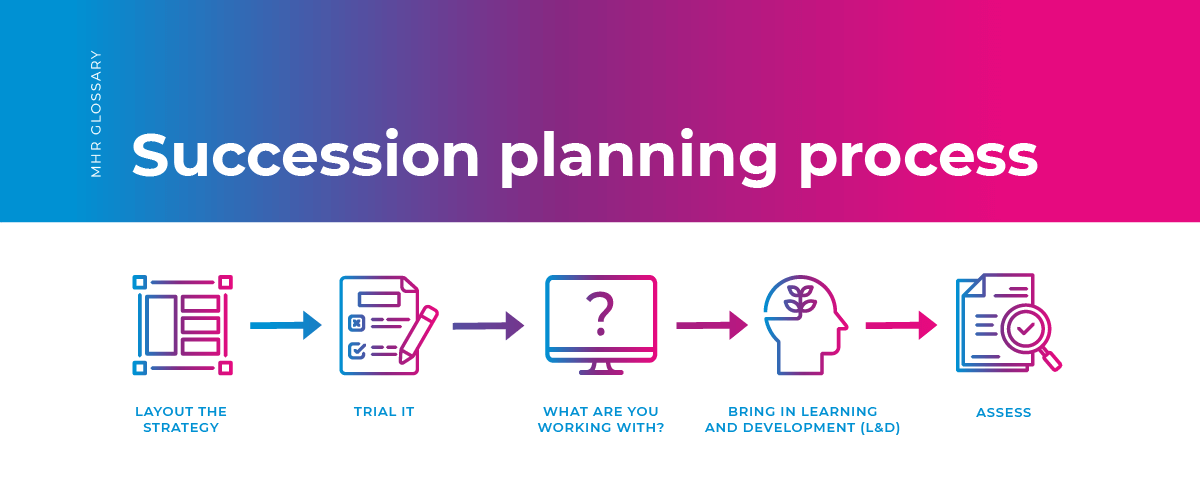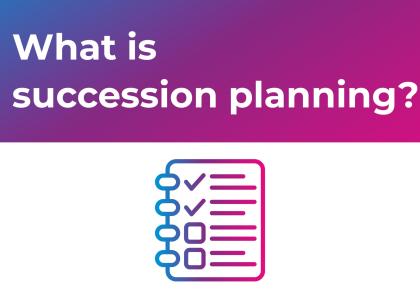Understanding Succession Planning
Think of it this way. Imagine you have a vital piece of software that only one member of the team is trained on how to use to its fullest potential. They’re the person everyone goes to when they have a question about the software, or when something breaks.
Then they leave.
What are you supposed to do then?
Creating a succession planning strategy is how you protect yourself from these staffing vulnerabilities. It empowers employees to consider how their future and the organizations align, ensures workflow is maintained even in a staffing crisis, and can even help HR leaders increase performance across the business.
How? Let’s take a look.
Implementing a Successful Succession Plan
There are two main strands to succession planning. One is focused on individual key roles, the other is a more holistic, organization-wide strategy. The key elements are basically the same, it’s just a matter of scope. You can follow these steps easily:
- Identify the most important positions that need a successor
- Build out what these profiles with KPIs and what the ideal candidate skillset is
- Suggest potential successors in line with the above
- Mentor and develop these successors so they’re prepared for the role
You should also take a moment to evaluate these steps so you can make sure best practice is being followed- more on that later!
There are also some key mistakes to avoid within succession planning. Many companies only focus on executive roles, but there are many key gears within any organization that require succession planning.
Failing to keep your plan up to date is another big concern. The world of work is constantly shifting, and what was vital to a role one year might be completely superfluous the next. Check in with succession plans regularly so they’re not running on assumptions.
There may also be a temptation to keep planning a secret. However, you should always aim to be as transparent as possible. If these processes are veiled, high performing employees might think there’s no opportunities for them to advance with you.
The biggest mistake is having only one successor per role. Simply put, what happens if they leave? Likewise, does you plan account for what will happen to the role they’ll vacate by moving up?
Benefits and Impact of Succession Planning
There are many benefits of effective succession planning, especially in terms of getting the most out of your long-term strategic investments.
One benefit you might not expect is how succession planning improves company culture. Everyone knows that organizations can change unexpectedly, but when there’s a robust and transparent succession plan in place that can help provide extra confident. People like to know there’s a plan.
Likewise, knowing there are these opportunities to progress can motivate talented employees. They’ll want to stick around knowing they’ll be given this chance to develop their own careers.
Succession Planning and Diversity
There is something of a double-edged sword when it comes to diversity and inclusion (D&I) and succession planning.
Succession planning can be a fantastic tool for ensuring D&I is enshrined in your company’s future. But equally, when used incorrectly it can wind up preserving a lack of diversity, as people from the same backgrounds are chosen over and over again.
This can happen when managers overlook people from certain backgrounds, whether through conscious or unconscious bias. That’s before you get into extra complexities, like groupthink, skill gaps, and long-term sustainability.
This requires a bit of course correction. Diversity should never be an afterthought, and you should never plan around ‘this role can only be filled by a person from this specific group.’ But breaking down barriers is vital to ensure everyone has an equal opportunity to succeed, so you need to ensure your succession planning has inclusivity built in.
This might involve actively identifying high-potential employees who’ve been overlooked, or people who’ve been perceived as not having the ability to fill a successional role. Why were they dismissed? It might also involve making your development opportunities as accessible as possible for as many employees. For example, if you run training out of hours, would working parents be able to attend?
Succession Planning Process
The best succession plan is one that suits your company, so your strategy should be fairly unique. However, there are some best practices that any organisation can utilise, which should give you a solid starting point.
Layout the strategy
What are your actual objectives with succession planning? Are there any KPIs? Do you have a budget, and if not what resources are you working with? These questions should all be answered during the planning phase.
Common KPIs for a succession strategy include time to hire, diversity metrics, retention rates and readiness.
Trial it
It can often take a while before you know if your succession plan has worked, so to ensure your strategy is sound it can be helpful to have a trial run. Collate a smaller pool of roles and go from there to start with.
What are you working with?
Knowing what skills you have at your disposal is useful even outside of a succession planning strategy, especially in regards to workforce management. Take the time to evaluate your employees and see who might be a good fit for future positions.
Bring in learning and development (L&D)
Once you know what skills are in your company, you can develop a robust L&D plan. Again, this is a valuable asset even outside of succession planning, so it’s worth your HR team investing into it.
Assess
Go check those planning metrics from before. Have you matched them? If not, what could be done better?

Final thoughts
Succession planning is a lot easier when you have a strategy in place, and as much information as possible at your fingertips. That’s where People First can be a huge help.
To find out more, take a look at our talent management offerings. It covers everything you need for a complete succession management plan.



